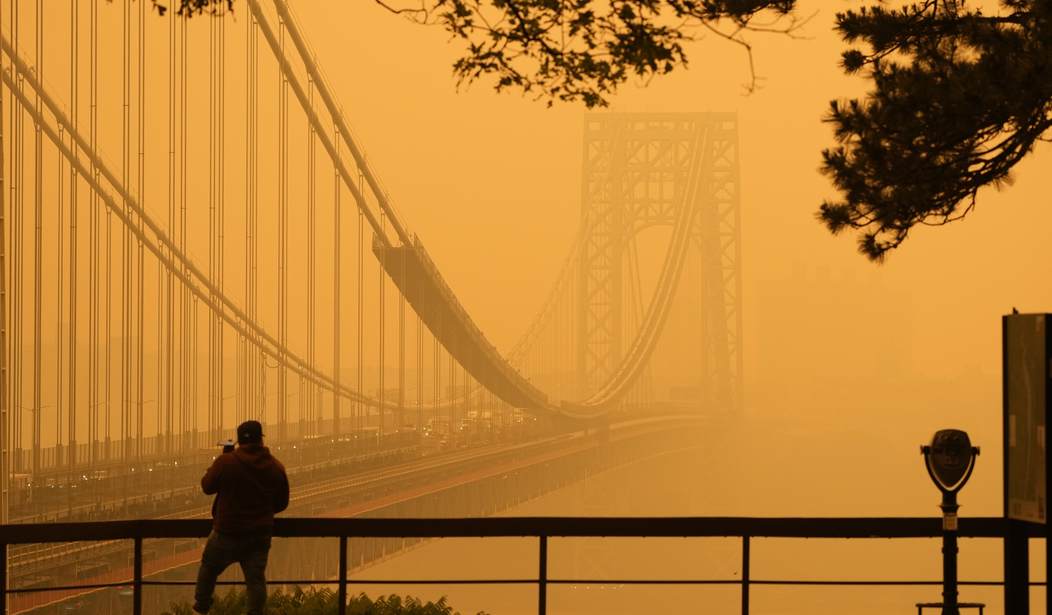Large parts of the United States are currently being plagued by dense clouds of smoke that are causing air quality alerts to be issued. A lot of people are walking around wearing masks, making it look like we’re back in the days of the pandemic. As you’ve likely already heard, the smoke is blowing down from Canada, where there are now more than 500 wildfires raging, with 262 of them being listed as “out of control” by the Canadian government. But despite volunteer firefighters from ten countries having deployed to Canada to help, the majority of those fires aren’t being fought in any fashion. Most of the provinces in Canada are just letting them burn unless they are approaching densely populated areas. Why are they doing this? CNN sought to offer some answers this weekend, and while the reasons may not seem satisfactory to some of us, they do sort of make sense. But that’s not doing anything for the affected people in the United States.
While every Canadian province responds to the fires in their regions differently, they all have common guidelines emphasizing the importance of prioritizing which fires to fight and which to leave alone.
Massive fires burning in remote areas – like some of those currently burning in northwestern Quebec – are often too out of control to do anything about.
“If you have limited resources, and you have a lot of fires, what you do is you protect human life and property first,” Robert Gray, a Canadian wildland fire ecologist, told CNN. “You protect people, infrastructure, watersheds, so there’s a prioritization system.”
Obviously, the usual suspects want to blame this on climate change, along with everything else. And CNN jumps on the bandwagon, mentioning climate change three times in the opening paragraphs, including in the first sentence. But Canada has faced large wildfires nearly every year for all of living memory. We’re just dealing with some unusual jet stream conditions this summer that are causing the prevailing winds to blow south more often.
The primary reason that Canada isn’t fighting most of these fires is that they simply don’t have the resources to do so, even with international help being available. Canada is the second largest country in the world measured by area. But they are 39th in terms of population, having nearly 300 million fewer people than the United States. A lot of Canada is empty of people or even roads. And most of it is covered in boreal forests. During the dry season, that’s going to lead to huge fires. A few of the fires are suspected to have been started by arsonists, but the vast majority began naturally, generally from lightning strikes.
Rather than climate change, even CNN was forced to admit that these fires are part of nature’s own housekeeping. Fires are natural and in fact necessary for the environment. One scientist with Canada’s Fire Service is quoted as saying, “There’s always been fires Canadian fire managers don’t fight. It’s expensive to do so, ecologically undesirable, and kind of just messing with nature.”
The floors of large forests tend to quickly accumulate natural debris, including needles, dead leaves, and branches. They note that fires restore soil nutrients and help germinate plants. Further, they point out that many species in the forest have evolved in the presence of fire, and fire “is an essential process for conserving biodiversity.”
So while wildfires can be a nuisance in terms of air quality, they really aren’t that big of a deal. As long as they can be kept away from the populated areas, they’re just one of those necessary evils that we have to live with.







Join the conversation as a VIP Member